
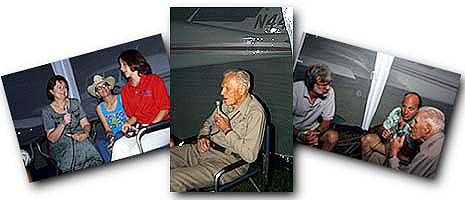
![]()
You will need RealPlayer to hear OSHtalk.
![]()
Tuesday OSHtalk (July 24, 2001) – At the close of a nearly perfect day, host Rick Durden sat under the wing of the Twin Beech and spoke with Civil Air Patrol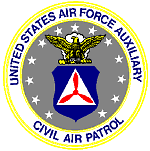 (CAP) members Kathleen Wiley and Rhiannon Auld about the tremendous amount of work done by CAP volunteers at Oshkosh. Rhiannon, a CAP cadet, told Rick about the involved process for a CAP member to be selected to come to AirVenture and about the typical day in the life on the flight line, chasing down overdue airplanes, locating ELTs or working as an emergency medical technician. Rick commented that he had noticed that the CAP cadets had not only become more adept at working airplanes in the last few years, but that someone had had the good sense to let them wear tee shirts and shorts in hot weather. Kathleen explained that the uniform rules had changed for the better, helping protect the health of the cadets working in the heat. After hearing what CAP cadets have to accomplish before they can even qualify to come to Oshkosh and work like crazy, you’ll have new respect for the young men and women helping you find your way around Wittman Field as you arrive or depart AirVenture.
(CAP) members Kathleen Wiley and Rhiannon Auld about the tremendous amount of work done by CAP volunteers at Oshkosh. Rhiannon, a CAP cadet, told Rick about the involved process for a CAP member to be selected to come to AirVenture and about the typical day in the life on the flight line, chasing down overdue airplanes, locating ELTs or working as an emergency medical technician. Rick commented that he had noticed that the CAP cadets had not only become more adept at working airplanes in the last few years, but that someone had had the good sense to let them wear tee shirts and shorts in hot weather. Kathleen explained that the uniform rules had changed for the better, helping protect the health of the cadets working in the heat. After hearing what CAP cadets have to accomplish before they can even qualify to come to Oshkosh and work like crazy, you’ll have new respect for the young men and women helping you find your way around Wittman Field as you arrive or depart AirVenture.
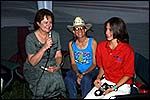 The next segment of OSHtalk finds host Rick Durden getting an update on the second annual Women With Wings Caravan to Oshkosh. Participants Abbie Friddell, Linda Layton and Chrissy Naber tell about the organization of the mass arrival of the Chick Flight into Oshkosh on Saturday so they could beat the Bonanzas and Mooneys. The logistics of mixing a diverse group of pilots flying a wide variety of airplanes so that they arrive at the same time at AirVenture are not for the faint of heart.
The next segment of OSHtalk finds host Rick Durden getting an update on the second annual Women With Wings Caravan to Oshkosh. Participants Abbie Friddell, Linda Layton and Chrissy Naber tell about the organization of the mass arrival of the Chick Flight into Oshkosh on Saturday so they could beat the Bonanzas and Mooneys. The logistics of mixing a diverse group of pilots flying a wide variety of airplanes so that they arrive at the same time at AirVenture are not for the faint of heart.
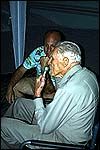 Dr. Brent Blue, AVweb’s aeromedical guru, joins Rick for the third segment of OSHtalk. Brent’s friend John Miller who, at the age of 95, is actively flying his Bonanza, accompanies him. John tells of his experience with the Pitcairn Autogyro and the factory’s attempt to delay his transcontinental round trip so that Amelia Earhart could be the first. Nevertheless, he was the first to make the round trip in an autogyro, an aircraft he continued to fly for more than 2,000 hours. John also relates the incredible story of his first three flights in a Curtiss JN-4 Jenny. Not only was he an avid reader of aviation technical material, he was too impatient to wait for an instructor so he went ahead and flew without one. More than six months have elapsed since those flights so he is willing to admit that on his third flight he took his first paying customer aloft.
Dr. Brent Blue, AVweb’s aeromedical guru, joins Rick for the third segment of OSHtalk. Brent’s friend John Miller who, at the age of 95, is actively flying his Bonanza, accompanies him. John tells of his experience with the Pitcairn Autogyro and the factory’s attempt to delay his transcontinental round trip so that Amelia Earhart could be the first. Nevertheless, he was the first to make the round trip in an autogyro, an aircraft he continued to fly for more than 2,000 hours. John also relates the incredible story of his first three flights in a Curtiss JN-4 Jenny. Not only was he an avid reader of aviation technical material, he was too impatient to wait for an instructor so he went ahead and flew without one. More than six months have elapsed since those flights so he is willing to admit that on his third flight he took his first paying customer aloft.
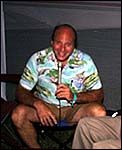 Brent closes out the evening by recounting a series of very good news reports from the FAA aeromedical division. Last year, the FAA announced that it would allow Aviation Medical Examiners to grant renewals of “special issue” medicals for pilots without kicking them to the FAA in Oklahoma City. Since then, the FAA has lived up to its word and the system is working and working well. Brent tells us that AMEs who have gotten the briefing are now able to save many pilots months of delay and potentially significant money when they renew their medicals. Brent also says that there is some reason to believe that the new Sport Pilot Certificate will allow pilots who hold a valid driver’s license to fly certain types of aircraft without needing a Third Class Medical. Because fewer than 2 percent of aircraft accidents can be traced to something that might be caught by a medical exam, the FAA seems to be cracking open the door to reducing the importance of the Third Class Medical, possibly … dare we say it? … even getting rid of it. Brent also reminds us that the FAA’s enlightened policies on medical certification of pilots with diabetes are continuing to move forward with more pilots, even those who are insulin dependant, obtaining medical certificates. In addition, Brent reports that the aftermath of the LASIK procedure that resulted in 20/20 vision in both of his eyes continues to be positive. He has not had problems with night vision as noted by some, and he points out that due to our usual sleep cycle, it is not unusual to have less visual acuity at the end of the day. Brent, if you are going to keep giving us good news on the FAA medical front, you can come back to OSHtalk any time.
Brent closes out the evening by recounting a series of very good news reports from the FAA aeromedical division. Last year, the FAA announced that it would allow Aviation Medical Examiners to grant renewals of “special issue” medicals for pilots without kicking them to the FAA in Oklahoma City. Since then, the FAA has lived up to its word and the system is working and working well. Brent tells us that AMEs who have gotten the briefing are now able to save many pilots months of delay and potentially significant money when they renew their medicals. Brent also says that there is some reason to believe that the new Sport Pilot Certificate will allow pilots who hold a valid driver’s license to fly certain types of aircraft without needing a Third Class Medical. Because fewer than 2 percent of aircraft accidents can be traced to something that might be caught by a medical exam, the FAA seems to be cracking open the door to reducing the importance of the Third Class Medical, possibly … dare we say it? … even getting rid of it. Brent also reminds us that the FAA’s enlightened policies on medical certification of pilots with diabetes are continuing to move forward with more pilots, even those who are insulin dependant, obtaining medical certificates. In addition, Brent reports that the aftermath of the LASIK procedure that resulted in 20/20 vision in both of his eyes continues to be positive. He has not had problems with night vision as noted by some, and he points out that due to our usual sleep cycle, it is not unusual to have less visual acuity at the end of the day. Brent, if you are going to keep giving us good news on the FAA medical front, you can come back to OSHtalk any time.
![]()












































